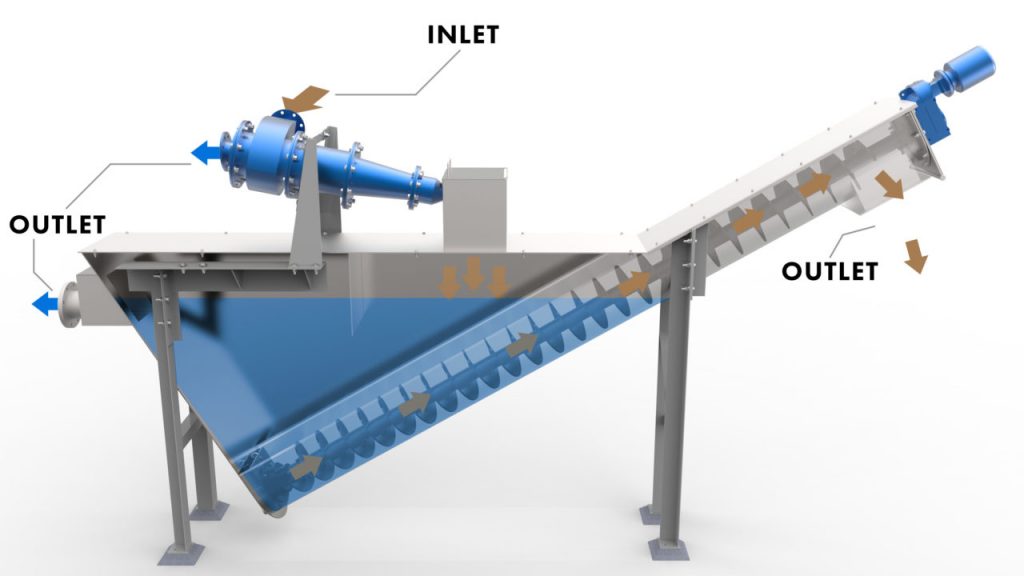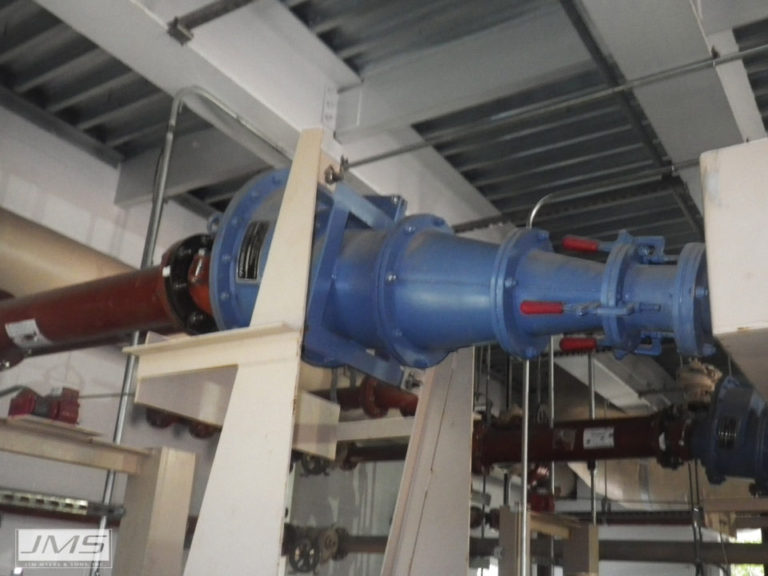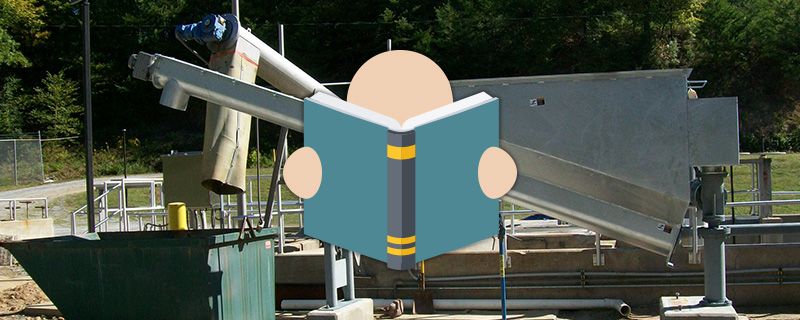Grit Classifiers or also known as a grit screw, grit separator or grit classifier are used at wastewater plants at the headworks (front end of the plant) to help separate the grit from organics and water. Grit removal needs to be done at the headworks of plants to help reduce wear to upstream pumps and mechanical equipment. Grit can also cause pipe blockage and reduce the effective volume of the treatment basins. Grit classifiers usually consist of a hopper positioned on top of an inclined screw conveyor. Typically grit classifiers are made of stainless steel housing and have a high strength abrasion resistant fights on the screw because of the abrasive application.
What is the Process of a Grit Classifier?
All types of grit classifiers typically receive a grit slurry from an air lift pump or a grit pump(s). Most classifiers receive a grit slurry that is 1-3% solids mixture. The hopper of a traditional grit classifier is designed for the shortest retention time to allow heavier grit to settle, but not the lighter organic material. The organic material is carried out of the hopper with the grit free overflow and is returned to the plant’s process. As the grit is carried up the incline and passes the water line elevation, by rotating a very slow RPM screw conveyor, it allows time for the water to drain back into the hopper. The screw conveyor conveys the grit out of the system and usually into a dumpster to then be hauled to a landfill.

How to Size Grit Classifiers?
Grit classifiers can range from 12” to 24” in diameter (12” is the most popular size). Grit classifiers are sized by hydraulic flow of gallons per minute (GPM) and solid conveyance for the screw conveyor. Influent flow drives the size of the hopper and whether a hydrocyclone should be considered.
When is a HydroCyclone used on Grit Classifiers?
When receiving flows less than approximately 250 GPM a hydro-cyclone is not necessary, but when flow exceeds 300 GPM or so the use of hydrocyclones is often considered. Hydrocyclones separate the water from the grit, sending over 90% of the flow back into the plant’s process grit free. The grit slurry, less than 10% of the flow, goes to the grit classifier hopper. Adding a hydrocyclone to a system allows the hopper of the grit classifier to be smaller for a system that will have a higher influent flow to achieve the same retention time and efficiency.

Jim Brettman has been with JMS for 9 years and serves on the sales side of the business as a Sr. Application Engineer focusing on the JMS Delta-SEPARATION. He has a BS in Civil Engineering from the University of Tennessee and worked in various positions with Exxon Co. for 12 years. After locating to Charlotte, Jim ran his own business for seven years as a rep for industrial wastewater treatment equipment and systems. Jim is proud to have worked closely with Dave Myers in closing the largest single sale by JMS to date, the Boston Deer Island Delta-SKIMMER (scum pipe) project. Jim says, “I thoroughly enjoy working with a Company that embodies integrity, quality, and service as its mantra, and working with our Reps to increase the sales of JMS products.”

